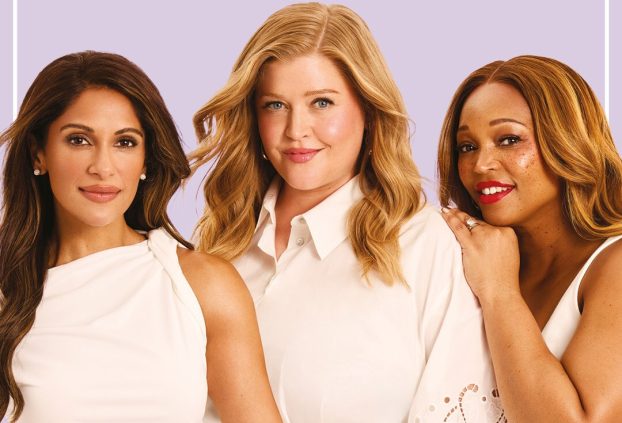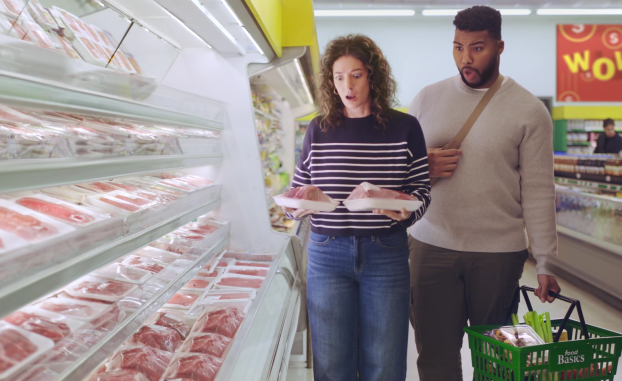Universal Music Canada is testing every conceivable new market model to stay on top of a tumultuous industry – experimenting with subscription-based and ad-supported solutions and spinoff consumer products to offset sinking CD sales
Over the past decade, the music industry has been grappling with the biggest challenges in its history. Shaken out of complacency and panicked by their inability to control (and profit from) downloading and file-sharing, record labels are faced with an uphill battle: how to get on top of fast-changing music-delivery technology and make a profit without alienating their customers?
Randy Lennox, president/CEO of Universal Music Canada (UMC), calls the recent upheavals ‘the perfect storm,’ and indeed, 2007 was another rocky year for his industry. Layoffs were announced at several labels as 2008 began – including UMC, which sent 19 employees packing. (UMC declined to provide financial results for this story.) Still, while album sales were down by 7% in Canada, digital album sales were up a robust 93%, indicating that obituaries for the music industry are premature.
The industry’s challenge now is to reprogram consumers to see music as something worth paying for when they’ve been getting it for free. That task has been made more difficult by the lack of an easy-to-use, reasonably priced, across-the-board paid-download service, not to mention a combative environment in which the U.S. record industry has actually sued its own customers for downloading music.
That has not been possible here, as consumers compensate copyright holders with a levy on blank CDs and tapes, but the relationship is strained. Last year, Universal offered consumers an olive branch in the form of DRM-free downloads, which can be copied and played on various devices. But in the company’s new Comes With Music plan with Nokia – which builds the cost of a year of music downloads into the price of a handset – the tracks will reportedly be playable only on the Nokia device, which means it will likely meet with consumer resistance.
Still, demand for music is as strong as ever, and companies smart enough to let go of outdated models and develop workable new ones will prosper. Lennox is convinced that the answer is coming, and in the meantime he and his company are trying to stay on top of the game by diversifying UMC’s business, developing new revenue streams, experimenting with everything going and leveraging its dominant position in the market to establish myriad new partnerships and marketing efforts. Sears, Imeem, CTV and Frito Lay are just a few of the partners UMC is working with to develop new sales and marketing models.
The country’s largest record label, Universal has existed in Canada since 1918, and is involved in producing, manufacturing, marketing, selling and distributing music. As a division of Paris-based Vivendi Universal, it represents international artists including Elton John, Gwen Stefani and Sting as well as Canadians Nelly Furtado, Shania Twain and Diana Krall. The company has helped develop platinum-plus careers for The Tragically Hip, Bryan Adams and Sam Roberts, and dominates the urban market with artists like 50 Cent, Kanye West, Mary J. Blige and Toronto’s Jully Black. And it’s capitalizing on that impressive roster to sell music in different ways, from ringtones to licensing deals for TV and film and custom CDs for retailers.
Lennox, who started as a customer service rep in 1978 and worked as Ontario branch manager and VP sales and marketing before being named president/CEO in 2002, has pushed UMC to cover lots of bases. The company invested in MapleMusic.com, an umbrella group for emerging Canadian artists, in 2002 and the online store Puretracks in 2003; launched a visual-products division called Vivendi Visual Entertainment in 2004; and expanded its distribution arm to include more than 40 labels over the past five years. These efforts have been rewarded by an increasing market share, which currently stands at 38.7%, compared to 25.5% for the U.S. division.
Traditionally, UMC’s marketing strategy was dominated by print, TV, radio and POP advertising with retail partners. That’s changed with the rise of digital distribution and decreasing budgets, which are forcing the company’s 22-person marketing team to be creative. (The department, which handles most advertising in-house, was overhauled in January, when SVPs Sarah Norris and Steve Cranwell were replaced by SVP sales and marketing Wesley Hayden and VP marketing Donna Lidster.) As a result, a lot of marketing efforts involve paying for placements with content rather than cash.
‘One of our first conversations about a marketing plan is what content is available from the artist, like extra songs and video clips, and where we’re going to place it,’ explains Lidster. ‘We may supplement it with a buy somewhere, but a lot of stuff we can leverage for free, because we’re providing content. And what would we rather do – spend on a banner that somebody may click onto, or provide all these new songs? That’s what people want, and it’s obviously more appealing.’
Lidster says UMC doesn’t have the budget to do intensive research, but it taps its website, umusic.ca – which has 150,000 registered members – and street teams for information, as well as outside partners like HMV that are willing to share their customer data.
With an artist repertoire that spans so many different demographic groups, Lidster stresses the importance of using that info to tailor marketing plans for each release. ‘We look at who they appeal to, so if it’s Jann Arden or Andrea Bocelli, we’ll use traditional media like classical radio or the Globe and Mail,’ she explains, ‘and for Hedley, the first thing I’m thinking about is not print – it’s what I can build online. It really depends on the artist, and what kinds of tools you have.’
Lidster and her department are careful to not to jump too far onto the mobile/online bandwagon and neglect older record store customers, who don’t do much text messaging but dominated late-2007 sales with purchases of albums by Anne Murray, Celine Dion and Josh Groban. And innovative campaigns can work for older artists as well. For Joni Mitchell’s latest album, for instance, UMC ran a contest at galleries and wine stores that offered a Mitchell lithograph as a prize.
Universal also uses its deep repertoire to find partners to help pay for campaigns. The company’s longstanding relationship with CTV paid off when the net bought CHUM. With MuchMusic, MTV and eTalk under the same umbrella, UMC is able to take advantage of multiple opportunities, including providing high-profile artists like Bon Jovi and Rihanna to beef up Canadian Idol viewership in return for closed-captioning spots on network shows.
‘We love the power of television, but we’ve got small budgets, so being able to get the exposure has been great,’ says Lidster.
A promising retail partnership was born late last year, when UMC signed a deal to provide Sears Canada with music online and in stores, so that Disney-branded clothing can be sold alongside Disney recorded music, or Gwen Stefani’s perfume with her latest album. The deal was launched with a Hannah Montana contest that attracted 40,000 online entries.
As well, Universal found that the teen demographic it seeks can be found in movie theatres, so it established a relationship with Cineplex to get its music heard in 400 theatres across the country. Moviegoers can see a Bon Jovi video on the monitor at the concession stand, and hear a Universal soundbed of tracks and see an ad for an act they’re pushing in the theatre, not to mention a contest page when they open the Famous magazine.
‘We started out talking about what kind of concert simulcasts we could do together, and did a successful Bon Jovi one,’ says Lidster. ‘Then we took it to the next level, which meant becoming their exclusive music provider. It’s been a great partnership, and we’re just starting to use them online. The Jay-Z movie American Gangster opened in December, and we bought the pre-roll on the trailers on the website for that, and we’re doing one for Hedley as well.’
The burgeoning mobile sector also provides opportunities, and Universal has built partnerships to trade music for access to consumers. At Virgin’s VFest in Toronto last September, festival goers text messaged for a chance to meet artists and buy their music. And Universal was the first Canadian label to offer a cross-carrier five-digit short code that can receive text messages, allowing it to market CD inserts, handbills, print ads and more directly to consumers.
‘It’s about trying to understand what the carriers are planning so we can slot in our artist,’ says Lidster. ‘We’re working with Rogers on a Jack Johnson initiative. There’s an insert in his new CD – one side lists the Trutones available for purchase, and the other has a contest that ties into Rogers’ My5 initiative, in which you and five friends can win a trip to see Jack in Hawaii.’
Universal utilizes its roster in all manner of promotions, putting singer Hayley Sales together with Frito Lay’s Sun Chips, pop-classical duo RyanDan with Rosemount Estate wines and rock band the Killers with EB Games, among other pairings.
‘We have the artists everyone’s excited about,’ says Lidster. ‘Partners will ask what’s on our list, and we can say, ‘Well, it’s Kanye West and U2 and Shania Twain and Diana Krall,’ and it excites them. We have such breadth in our catalogue that we probably have something that fits, regardless of the product.’
That’s why Lidster is optimistic about the future. ‘At the end of the year, album sales were down, but we have seen growth in the digital business,’ she says. ‘People who buy music online are spending more than they did in stores. They’re addicted – checking out new music, buying singles, replacing their catalogue – and that’s exciting.
‘And there are all these new partnerships because of technology. Like Quick Response Codes, where you go up to a poster and text on your mobile phone. They’re huge in Japan, and we’re going to roll them out this year, because how great is it to be at a concert and have a chance to sample a track from an upcoming CD? We have all this great music, and knowing that everybody wants a soundtrack of their life, how can you not be optimistic?’
With all these ideas ringing in our heads, strategy sat down with Randy Lennox at Universal’s Toronto headquarters to discuss them.
How has Universal adapted to the rapidly evolving industry?
I’d say 2002 was the paradigm for us. CDs came in ’82, and we had a growth spurt for nearly 20 years before the storm came. In ’02, we chose to do four things. The first was diversify, and we started the process of opening a visual division. We knew the marketplace was leaning toward indie music, so we embraced that sector to offer big-brother services and ride those coattails. We opened Maple Music, where singer-songwriters could have a smaller, funkier environment, and Fontana North, a distribution company within Maple. And we invested early in digital staff, which has proved fortuitous because we now have a higher market share in digital than in physical product.
What is your mobile market share now?
It’s 51%, and one of the reasons is that we embraced mobile early. Also, mobile music skews urban, and we have a healthy proportion of urban music. But we’re always making improvements. For example, ringtones were once pre-chosen for you, but now you can go through a song and find that moment for yourself. It took a minute to recognize that we need to push the fact that the ownership is yours and all we really are is a menu of services. That’s our vision.
As CD sales fall, what’s your most important alternative revenue stream, distribution or paid downloads?
It’s about equal. We gave music videos for free to MuchMusic and MTV for years, and then we realized we need to monetize video content. So in the past two years we’ve developed a model based on a combination of consumer pay-per-play and ad revenue-sharing. We grew up chasing revenue and managing profit. Now we are monetizing intellectual copyright. Our revenue on the top line might be lower, but the profitability will show up because we’re successful not only at monetizing video content but at a million ancillary things.
How have you been improving relations with consumers?
One way is DRM-free downloads. We recognized that the CD was DRM-free for 25 years, and then suddenly we were putting handcuffs on it. In the early 2000s, the industry was getting a terrible name for not trusting its constituency. Now we’re maturing in a new industry. I think we’re getting to the point of working on trust. And when we’re working on trust, they’ll stop stealing candy from under our counter.
I’m trying to find critical mass for the music we make and not be in denial about the best way to get it. It’s tricky. Music is intellectual property, and the delivery system is a vessel, and as long you identify the two things, you’re good. It is the challenge. But I have hope, because you can’t be down on this industry. We glue all our memories to music, and we have to never lose sight of that on the business side. We live in hope that consumers will recognize there is dishonesty in uploading music for free.
Are free, ad-supported download sites the wave of the future?
Absolutely, and we’re involved in a number of ad-driven sites in which we’re revenue-sharing on their advertising. SpiralFrog is one that is purely ad-supported. For example, if you want to watch the new Jully Black video, it forces you to watch an ad, then another, then the video. And they remunerate us based on that advertising.
You also have partnerships with social networking sites.
It’s denial to think that your music and visual products are not going to be flipped around the world anyway, so you have to find the best partnerships with these sites. The Imeem and SpiralFrog deals [in which Universal provides music in exchange for a percentage of ad revenue] are one way, Will.i.am‘s [in which file-sharing sites are compensated for adding branded mobile players] is another. It’s like there are 35 darts on the way to the dartboard. Our goal is to make sure we have the ones that work. I’d say our number one accomplishment in the past 18 months has been educating social media players about the responsibility they have to intellectual copyright, and getting them to be accountable for monetizing the relationship. These were not 15-minute meetings; they were difficult mountains to move. But I think they understand that we are making music and videos, and it’s reasonable to be paid.
You’re optimistic paid downloads will work?
Yes. In ’05, PricewaterhouseCoopers (PwC) looked at the recording industry worldwide, and their graph showed our industry growing to $38 billion in ’05 from I think $14 billion in ’82. It showed physical sales starting to fall in 2005, but it also showed that $38 billion growing to $54 billion by 2012. The experts are still optimistic. They think there’s exponential growth because they know we’re going to figure it out.
It’s just the delivery system that needs to be figured out, because demand is there?
Yes, and it’s growing. The irony of free downloading is that it widened our constituency dramatically. But we still have to make a living. Our industry has incredibly smart, resourceful people around the world addressing this issue, and someone is going to get it right. They’ll make billions in the process, but God bless them, because there will be some mechanism that breaks this thing wide open.
What about subscription music services?
Subscription is the best long-term model, because the consumer is already acclimated to it by Rogers, Bell and Telus. It’s all about ease of use. Charge me $15.95 a month and let me never think about it again, because when was the last time you thought about your cable bill?
But if you’re paying $15.95 a month for your phone or computer to have 10 million songs a month, that’s daunting. So our role is to make sure that our songs behave differently, and make Universal front of the line. Maybe if you buy a Rihanna song, for instance, you’ll get her video for free. Those are the kinds of marketing things we’re involved in.
The ringback is a great example. I have four kids, and every member of my family has their own cellphone and ringback. That’s an excellent example of adding value for a guy like me who’ll say, ‘OK, I’ll pay the $2.50.’ What’s the difference when you have your Bell bill? Call waiting, call return, all those things add up. Now let’s take the number of people who have cable or mobile bills and extrapolate that worldwide at $15.95 a month on a permanent basis, where it’s a part of your cable or mobile portfolio. Now I see PwC’s $38 billion going to $54 billion. That’s the only way I see it, because there’s the vessel.
How do you deal with artists like Radiohead balking at recording contracts and releasing music themselves?
There’s a sexiness to bands saying, ‘I’ll make it on my live shows and merchandise.’ But if you don’t have a constituency that’s bought your music, it’s going to be an empty hall you’re playing to. Because Radiohead released their own album, because Trent Reznor says Nine Inch Nails doesn’t need a major label, there’s a perception that if they can do it, so can anyone. Well, they spent years in this system, establishing a huge worldwide constituency. We now have Radiohead for Canada, by the way, which means not that they failed, but that they’re acknowledging that there is something to be said for what we do.
There’s a perception that labels’ A&R or artist development function is declining as consumers go online to find out about music.
There’s no question that YouTube is the new smoky bar to find the new artist. However, that does not change the A&R process. It’s so much more than finding a song. It’s the development of a personality, the explaining of a business, it’s a million things. A&R is more important now, because in the online world you have four or five thousand times the artists to filter, so you have to be better than ever. People say that if something gets a million hits on MySpace, it’s a proven hit. Well, let’s count how many have gone on to be big hits. The answer would be none. I’ve heard a million times that A&R is dead, and I think the opposite.
How important is the umusic.ca site?
We recognize that access to artists will be on their websites or YouTube. But Universal is a brand, and we have to be present in that. We get several million unique visits a year, but we don’t pretend it’s a primary resource for artist information. We use it to build databases. We seek permission to find out who you are, your age and your musical interests and background, so that we’re speaking and advertising to you and letting you know what’s available.
What other new marketing ventures are you developing?
We’ve just closed a deal with Manhattan, a Montreal-based apparel company. We’re feeding them our artist repertoire for T-shirts and caps, so we’re fully in the merchandise business. We shipped the Hedley CD in October, along with a beautifully packaged T-shirt, so when the consumer went to HMV they’d see the CD for $14.99 or both for $30. We’re trying to make sure we’re offering a portfolio of stuff around the artist. Our merch rights extend from Alicia Keys to Led Zeppelin as well as our own repertoire, so that’s very exciting new growth for us.
We’re also doing something with Nokia where we’re giving people music that’s being value-added against the handset being sold. We realize we’re the software, and our goal is to be paid for every piece of music that is sold in any form, in a reasonable fashion.
What about the videogame market?
We just bought the company Activision, which makes Guitar Hero, and, I mean, what a synergy! So we’re using those synergies to expand our merchandising and to get our repertoire licensed to gaming, as well as distributing the games they’re licensed to.
The videogame industry always underships. It may be strategy, but half the people lining up don’t get it. And we can help, because our world is just-in-time inventory and replenishment, that’s what we do. These are some of the ways we’re diversifying our portfolio.
What are you excited about in the future?
I’m excited about all of it, because I want to tackle it all. I like challenges.




















